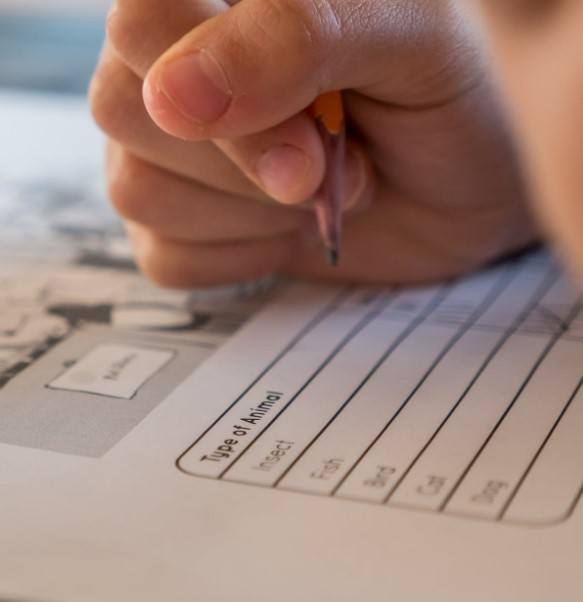SAT Reading Tips | Useful Advice You Will Find Helpful To Ace This Part of the Test
Are you feeling anxious and stressed over the approaching SAT Reading Test? Well, you are not alone. SAT 1 can be overwhelming even for the brightest of students. The fear is from the realization of the enormous impact that the exam has for one's future. Anyway, not to worry, with the right SAT reading tips, you can get the high scores that you desire.
There are various SAT reading strategies that you can employ to ace the test. For instance, you can participate in test preparation classes, study groups, or free online classes. Here are SAT prep books we reviewed that would come in handy in your SAT reading preparation.
SAT Reading Tips for a Great Score
Before you can start thinking of the tips and strategies you need to employ to hack the test, you must first understand it. SAT Reading Test that assesses your ability to read a text critically and interpret its meaning.
The SAT Reading test texts are similar to those you will come across in the college or university. The SAT Reading Test is a component of the Writing and Evidence-Based Reading section of the SAT Reasoning Test.
The SAT Reading Test constitutes 50% of the total Evidence-Based reading section score of SAT 1, ranging from 200-800. You will have 65 minutes to complete the 52 multiple choice questions in the reading test.
The questions come from 5 passages from which you will get your responses to the questions. Each course is 500-750 words in length, with the paired passages totaling to 500-750words. Some passages will include visual information such as charts, graphs, and tables. You have to interpret the visual information to respond to the questions. However, you don't need to do any math in this section.
You require no pre-existing knowledge to tackle the reading test. You also don't need to memorize any rules or formulas. The passages contain all the details that you need to answer the questions. All you need is the right SAT reading practice, and you are good to go. You can use these SAT courses to practice and get prepared.
So, which tips can you employ to get a great score in the SAT reading section?

Know What to Expect
It will be an excellent idea if you know what you expect to get in the test. As such, you will be psychologically prepared to face the test.
What do you expect to get in the SAT reading test?
The test will comprise of 52 questions from five passages taken from science, fiction, history, literature, and social studies. You will have 65 minutes to answer questions, including getting details from a graph, finding the main idea, and determining the contextual meaning of words. The questions may also include why specific details were included in the passage by the author.
If you want to be a step ahead, identify the mistakes that you make before sitting the test. When you figure out your mistakes, you can target how to improve them to perform better.
Most of the mistakes that students make fall into three categories. These include content knowledge, careless mistakes, and pacing errors. Before you can sit for your SAT reading test, you can practice some formative assessments to deal with the errors.
Choose Your Order
No rule says that you must follow the questions in the order they have been presented in the test. Therefore, you can choose your order, depending on your preference.
Secondly, the questions on the SAT reading test do not come in their order of difficulty. You can decide to skip a difficult problem and deal with the easy one at first to save time. You shouldn't punish yourself so much if you didn't answer a question. You can come back and give it another try after you are done with all the questions you are sure with.
For the most challenging questions, you can use the elimination method. Before 2016, you would get a penalty for every question that you get wrong. As you already know, the penalty for wrong answers was eliminated with the new changes in 2016.
With that freedom, why should you leave a question blank while you have multiple choices to choose from? There are four various choices for every problem. If you leave a difficult problem without answering, you have a 0% probability of getting it right.
If you guess any answer, you have a 25% probability of getting the answer right. By employing the elimination process, you first get rid of the answers that you are sure they are wrong. Secondly, cancel out the solutions that you consider likely to be incorrect. With the remaining two questions, take your best guess. You will still have a 50% probability of getting the answer correct.
The strategy gives you a better chance of maximizing your SAT reading test scores.
Read What You Need
You only have 65 minutes to read five passages and respond to 52 multiple-choice questions. The five courses have about 3000 words, which leaves you with 12 minutes to read every passage and have time to review it and answer the questions.
You don't have to read the whole passage with such constraints and then answer the questions. Since you have the questions and the courses there, juggle between the two. Read the question and proceed to look for the answer from the passage instead of reading it whole.
It would therefore help if you mastered the skill of skimming through the passages. Instead of reading the whole passage, you can save your SAT reading time by looking through the passage. Reading the introduction and conclusion will give you an overview of what the passage is about.
Other people prefer reading the topic sentence and the last sentence in every paragraph. Whichever case applies for you, ensure that your game plan helps you in saving time.
Leave Your Opinions at the Door
As you use the other tips for SAT reading, also consider not implying your opinion on the questions. You will come across problems telling you to infer or imply. You might be tempted to assume your answer from your general knowledge from other fields in such questions.
However, the questions that seek an opinion have their answers in the passages. Although you may not get the answer directly from the passage, there will be lots of evidence supporting the correct statement.
After a question that asks for a point of view, you will get another one asking you to cite evidence.
For instance, which choice has the correct evidence to the previous question?
The four multiple-choice answers will point out citations from the text that are probable answers. They may even provide line numbers so that you can locate the quotation quickly. You will then have to pick the choice that offers the correct evidence for the question.
Be cautious as you may be offered several lines that carry the same idea, and only one of them provides the correct answer to the question.
Take Dual Passages One at a Time
Among the five SAT reading passages, one of them is a set of two passages. The two passages can be from the science or social studies subjects, and they are shorter than other courses. There are questions from the first passage, the second, and a combination of the two.
If you are not careful, the questions can be confusing. You can start by doing the questions for the first paragraph and then the second. Lastly, you can tackle the problems that come from the two passages. That will make it clear in your mind what the test is looking for.
Save Main Idea Questions for Last
The first question in the SAT reading test is a general question that will ask for the main idea, point of view, the purpose of the passage, or any shift in the course.
As mentioned earlier, you don't have to read the whole passage to answer the questions. All you have to do is skim through the passage and get the main idea of communicating. As such, you may not get it right if you try the general question first.
It would be good if you first answer the other questions. When you are done with the other questions, you will have an idea of the general message that the passage is putting across. You can then go back and answer the first question.
Additional Must-Know SAT Reading Tips
Recommended Resources
Don't spend too much time reading the passage.

As mentioned earlier, you only have 65 minutes to read approximately 3000 words in the five passages in the SAT reading test. After reading, you have to review the passage and answer the questions that follow.
If you are not careful with time management, you will run out of time before answering all the questions. Also, if you read the passage very fast, you may miss out on some critical information.
Therefore, the best approach would be to read the passage once in about 5 minutes to get the main idea. After that, don't go back to re-reading the passage, trying to master the topic. Proceed to answer the questions so that you can save on time.
Begin with the most straightforward passages

There are five passages in the SAT reading test. The passages range on various topics, including social studies, science, history, and literature.
Among the topics, there may be some that are more interesting or easier for you. If the easy passages come last, nothing stops you from starting with them. The courses are not put in any particular order that you must follow.
If you can do away with the simple passages fast, you will then have enough time to come back to the more challenging ones and tackle them.
Answer easier questions first

Here, you can use the Two-Pass strategy to save more time during the reading test. The method allows you to first deal with the easy question that you are sure to get the correct answers. That leaves you with more time to come back to the hard questions later.
With this strategy, you will need to decide on how much time you need for every question. Stick to the timelines you set for yourself. If you come across a question that you are not clear on the answer, take a guess, and then mark the question's number on the booklet.
Then, proceed to the other questions that you are sure of. If you have time left after completing the easy questions, you'll come back to the answers you guessed and have a second look at them. If you don't have the time, at least you'll not have left the answer blank. You will still have a certain probability of getting the question correct.
If you are zoning-out, change the way you are sitting and try again

The SAT Reasoning task is an overwhelming test, even for the brightest students. Even if you have been doing SAT reading comprehension practice for the last few months, it's possible to feel overwhelmed on the test day.
The anxiety and fear of the unknown can cause a lack of focus. If you lose focus, you will try to read the passage, but you will not get the concept, or it won't be easy to finish reading it.
If you find it hard to concentrate on the passage, try changing your position. If you were reading the passage while slouching, change the position, and sit upright and try reading again. The change in the sitting position, maybe everything you need to regain your focus back and complete the test.
If you are going to skip a question to try later, put a guess down anyway

Before 2016, it would be unwise for you to guess an answer you are not sure about. For every wrong answer that you would get, there was a penalty for it.
After the changes that were made on the SAT Reasoning test in 2016, there is no penalty for any wrong answer. Thus, there is no reason why you should leave a question without an answer. If you are not sure of the answer, use the elimination method to take your best guess before proceeding to the next question.
If you have time to come back to the question, you can have a more in-depth look at it. If you don't, you will have at least a 25% probability of getting the question correct.
Final thoughts
You are probably lost on how to improve SAT reading test scores. SAT reading preparation using online resources, formative assessment, etc. is one strategy you can employ. Additionally, we have provided some of the best SAT reading tips that you can use to tackle the SAT reading test with confidence.



